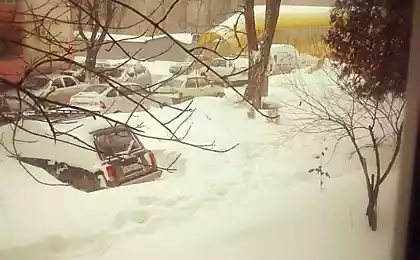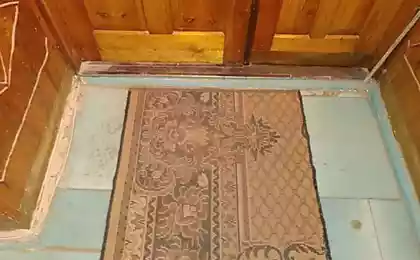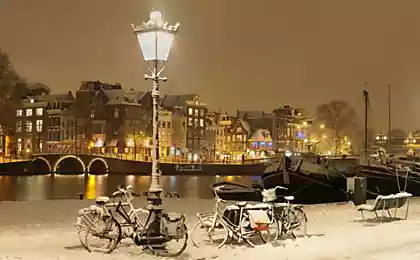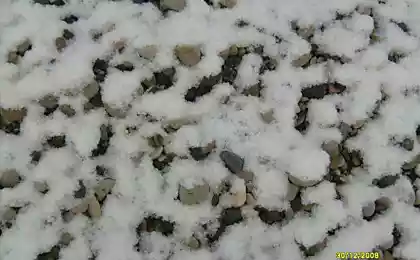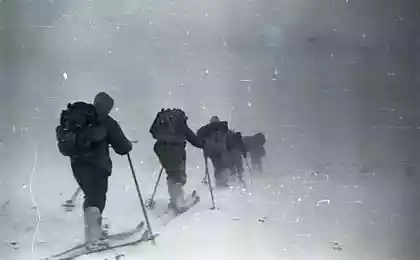713
What do to remove the snow? (13 photos)
Have you ever wondered what happens to the snow that is removed from the streets and roads?
I want to introduce you with this process ... :)

The most simple and environmentally friendly methods of snow removal is its removal of the dry snegosvalki,
equipped facilities collection and treatment of melt water. However, this principle of eliminating snow appeared not so long ago.
Until 2000, the most common method of snow removal was its direct discharge into surface
reservoirs or storage on a non-equipped dump. Up to 35% of snow dumped into the Moscow River and Yauza.
This snow was very dirty street trash, sand and various chemicals.

The idea of receiving snow in the city sewer system was born in the 60s of the last century.
Melting snow mass was carried out due to the heat of urban wastewater.
Originally developed solutions included dumping snow directly into drains,
without taking into account the qualitative composition of the discharged snow, which could lead to clogging of the network facilities and as a result, the rivers.

Now all the trash is sorted into separate bins, and the snow removed from streets,
first of all sent to smelting. There are two types snegoplavilnyh points: stationary and mobile.
In Moscow, it operates 35 stationary points, taking the major share of the melting snow.
The total capacity of stationary points is 193,300 cubic meters per day.
For comparison, the volume of one of the Seven Wonders of the World, the Pyramids of Cheops - 2, 5 million. Cubic meters. m.
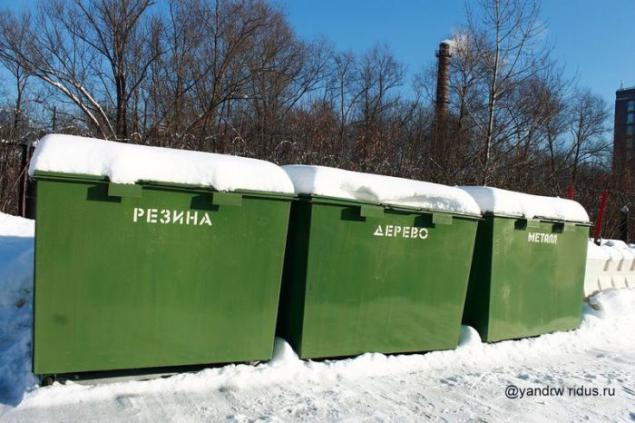
Stationary snegoplavilnye item should be placed on the sewage canals,
providing in its design treatment facilities and sewage mixture meltwater.
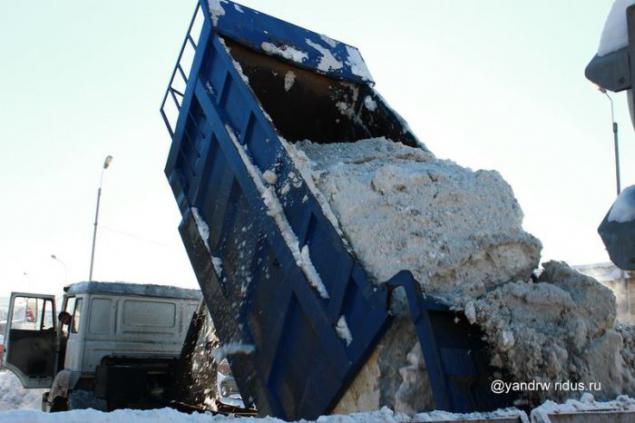
Snegopriemnaya camera is equipped vechnokrutyaschimisya crushers that in seconds pulverized mountain snow.
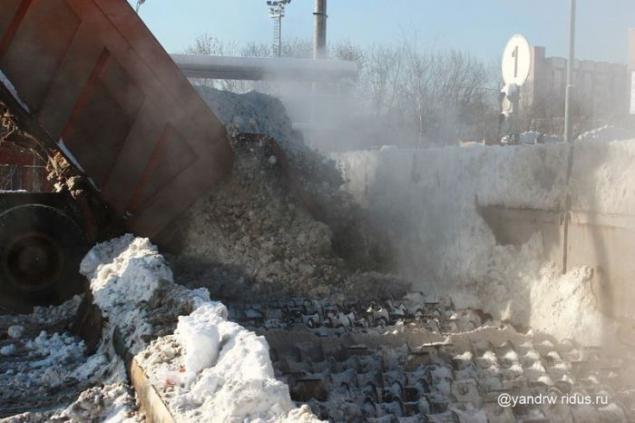
Part of the machines is discharged into the crusher, the part under the tractor, shifting snow on the lattice, by which he freely falls down.
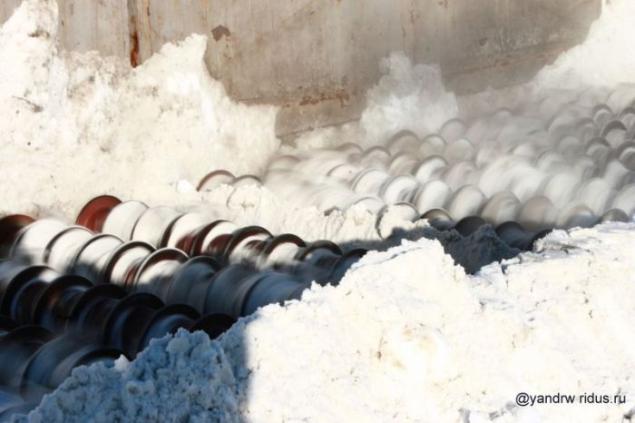
Shredded snow mixed with sewage, falls into the "sand trap»,
where the melting snow and precipitation of up to 95% of impurities, and the mixture is melted and the waste water is discharged into the drains.
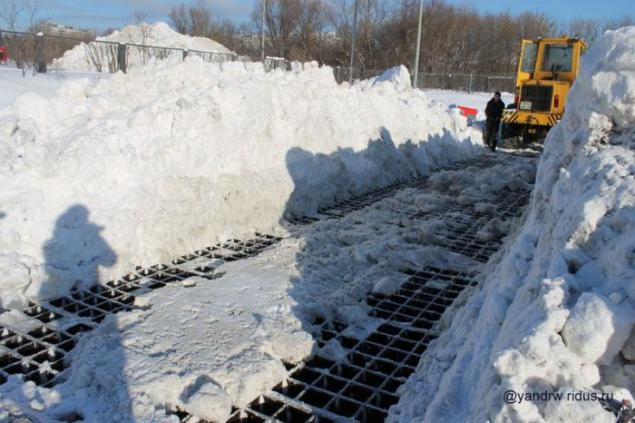
The total gross area of the territory from which the removal of snow in Moscow, more than 75 million sq. Meters.
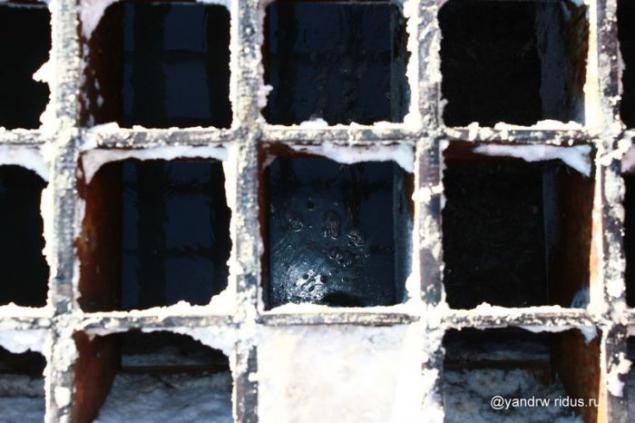
According to the former sewers snow (now water) goes to the treatment plant,
in particular Kuryanovskaya WWTP. Purified water is discharged it into rivers.
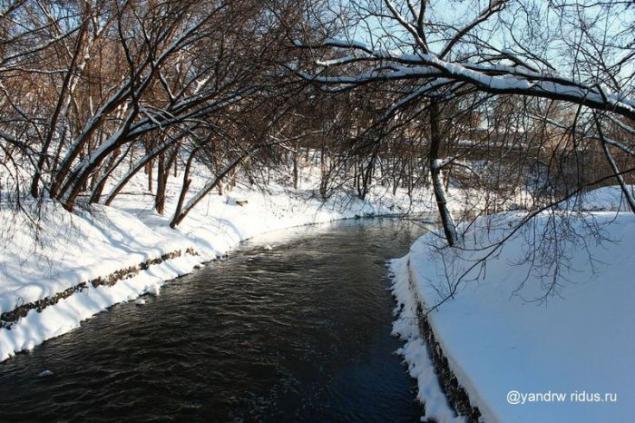
In winter, the item operates around the clock.
On the day there floated 12-15 million cubic meters per shift, which is about 350-380 cars.
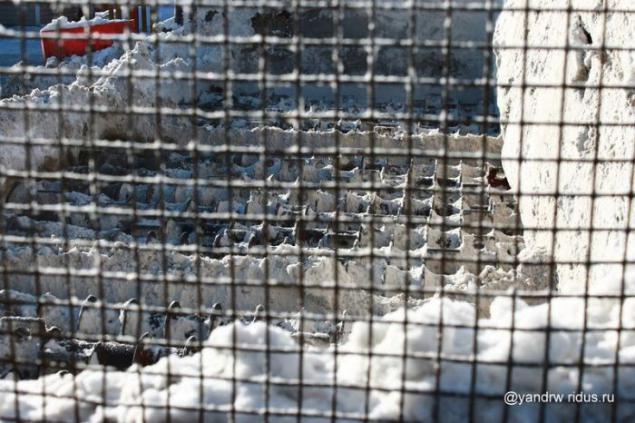
On average, the amount of snow that fall during the winter season is 36 million. Cubic meters.
According to employees of the station, this year is particularly "fruitful»

This winter was quite productive in the snow, yet every morning the central streets
and the roads are in a relatively pure state, therefore, it can be argued that snegoplavilnye points pretty well cope with the task.

I want to introduce you with this process ... :)

The most simple and environmentally friendly methods of snow removal is its removal of the dry snegosvalki,
equipped facilities collection and treatment of melt water. However, this principle of eliminating snow appeared not so long ago.
Until 2000, the most common method of snow removal was its direct discharge into surface
reservoirs or storage on a non-equipped dump. Up to 35% of snow dumped into the Moscow River and Yauza.
This snow was very dirty street trash, sand and various chemicals.

The idea of receiving snow in the city sewer system was born in the 60s of the last century.
Melting snow mass was carried out due to the heat of urban wastewater.
Originally developed solutions included dumping snow directly into drains,
without taking into account the qualitative composition of the discharged snow, which could lead to clogging of the network facilities and as a result, the rivers.

Now all the trash is sorted into separate bins, and the snow removed from streets,
first of all sent to smelting. There are two types snegoplavilnyh points: stationary and mobile.
In Moscow, it operates 35 stationary points, taking the major share of the melting snow.
The total capacity of stationary points is 193,300 cubic meters per day.
For comparison, the volume of one of the Seven Wonders of the World, the Pyramids of Cheops - 2, 5 million. Cubic meters. m.

Stationary snegoplavilnye item should be placed on the sewage canals,
providing in its design treatment facilities and sewage mixture meltwater.

Snegopriemnaya camera is equipped vechnokrutyaschimisya crushers that in seconds pulverized mountain snow.

Part of the machines is discharged into the crusher, the part under the tractor, shifting snow on the lattice, by which he freely falls down.

Shredded snow mixed with sewage, falls into the "sand trap»,
where the melting snow and precipitation of up to 95% of impurities, and the mixture is melted and the waste water is discharged into the drains.

The total gross area of the territory from which the removal of snow in Moscow, more than 75 million sq. Meters.

According to the former sewers snow (now water) goes to the treatment plant,
in particular Kuryanovskaya WWTP. Purified water is discharged it into rivers.

In winter, the item operates around the clock.
On the day there floated 12-15 million cubic meters per shift, which is about 350-380 cars.

On average, the amount of snow that fall during the winter season is 36 million. Cubic meters.
According to employees of the station, this year is particularly "fruitful»

This winter was quite productive in the snow, yet every morning the central streets
and the roads are in a relatively pure state, therefore, it can be argued that snegoplavilnye points pretty well cope with the task.




